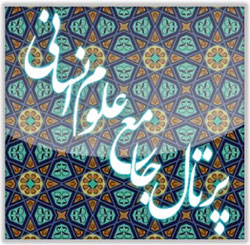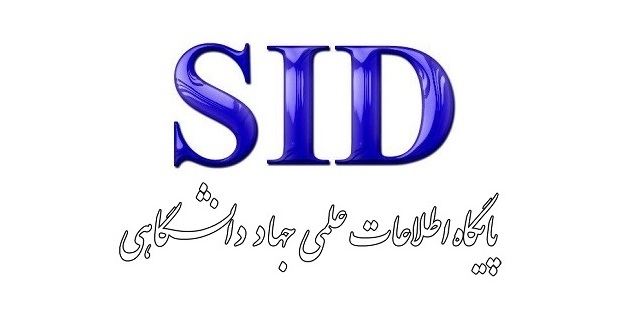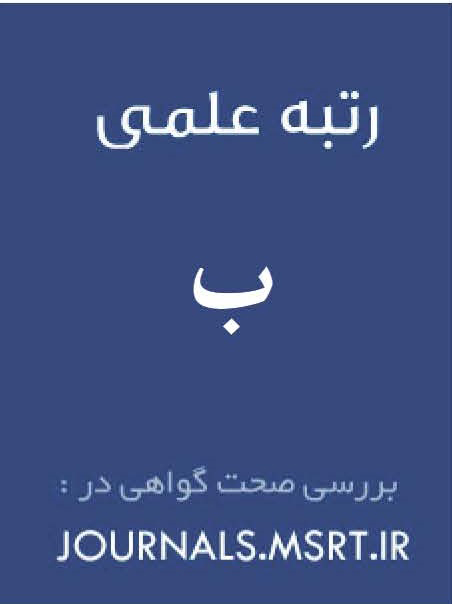Construction of the Concept of Woman in Intellectual Poetry: A Case Study of the Poems of Abolqasem Lahouti, Ahmad Shamlou, and Forough Farrokhzad
Keywords:
Enlightenment, Woman, Abolghasem Lahooti, Ahmad Shamloo, Forough FarrokhzadAbstract
Following the introduction of Western intellectual currents into Iran and, subsequently, the occurrence of the Constitutional Revolution, transformations took place in the ideological system of the people—particularly among politicians, literati, and poets—which led to the emergence of intellectuals in these domains. With the rise of this movement, a wide spectrum of intellectual tendencies appeared in Iran, some of which paid significant attention to the issue of women. For instance, woman in the concept of land and homeland, or woman in the sense of the feminine gender, can be observed in the three panels of Maryam Mirzadeh-ye Eshqi or Iran-e Khanom by Reza Baraheni. In the present study, which has been prepared using a descriptive–analytical method, the intellectual construction of poet–intellectuals such as Lahouti, Shamlou, and Farrokhzad concerning the concept of woman as feminine gender is examined. Each poet–intellectual has a distinct construction and perception of the concept of woman in their thought, derived from their cultural and social contexts. The purpose of poet–intellectuals may be to raise women’s awareness of their rights, to liberate them from stereotypical molds, and to lead them toward awareness, equality, and empowerment, enabling them to break free from the constraints of a patriarchal society. The findings of the study indicate that elements such as the pursuit of freedom, patriotism, resistance against despotism, defense of women’s rights, justice-seeking, opposition to foreign domination, pursuit of knowledge, and the promotion of collective awareness are among the prominent characteristics of the poetry of these poets. Lahouti, Shamlou, and Farrokhzad considered the most important reasons for women’s intellectual and cultural backwardness and lack of social standing to be male dominance and authority over women, the absence of women in society in terms of education and employment, the lack of advocacy by women themselves, and similar issues. The study also shows that Shamlou addressed this concept more profoundly than Lahouti and Farrokhzad, and their similar as well as different perspectives are presented.
Downloads
References
1. Engashteh Le. An Examination of the Position and Goals of Intellectualism in the Poetry of Simin Behbahani and Houshang Ebtehaj. Research Approaches in Social Sciences. 2021(25):18-38.
2. Taslimi A. The Blind Owl in the Twilight of Criticism. Tehran: Mah va Khorshid; 2020.
3. Baydur m. kuresel dunyada milliyetcilic. Istanbul: Irfan yayimcilik ve tanitim ltd. Sti; 2001.
4. Sartre J-P. In Defense of Intellectuals. Tehran: Niloofar; 2012.
5. Hosseini M, Jahanbakhsh F. The Image of Women in Selected Novels of Mohammad Mohammadali with an Emphasis on Feminist Criticism. Woman in Culture and Art. 2010;1(3):79-98.
6. Shafiei Kadkani MR. Ba Cheragh va Ayineh dar Jostojou-ye Rishe-ye Tahavvol-e She'r-e Moaser-e Iran (With Lamp and Mirror in Search of the Roots of Contemporary Iranian Poetry's Transformation). Tehran: Sokhan; 2011.
7. Reed E. Women's Freedom. Tehran: Gol Azin; 2004.
8. Lahouti A. Divan-e Lahouti (The Collected Poems of Lahouti). Tehran: Sepehr; 2006.
9. Karimi Hakkak A. Tali'ah-ye Tajaddod dar She'r-e Farsi (The Dawn of Modernism in Persian Poetry). Tehran: Morvarid Publications; 2005.
10. Johnson AG. The Blackwell Dictionary of sociology AusersGuide to Sociological-language. Britain, London1995.
11. Shamloo A. Collected Works of Ahmad Shamloo. Tehran: Negah Publications; 2001.
12. Nafisi M. The Image of Woman in Ahmad Shamloo's Poetry. Standard Journal. 2001.
13. Shamloo A. Aida, Dar-akht, Khanjar va Khatereh (Aida, Tree, Dagger, and Memory)1965.
14. Mokhtari M. Insan dar She'r-e Moaser (Man in Contemporary Poetry). Tehran: Toos; 1999.
15. Mosharraf-e Azad Tehrani M. Parishadokht-e Shahr (The City's Fairy Princess). Tehran: Sales; 1997.
16. Farrokhzad F. Collected Poems of Forough Farrokhzad. Tehran: Nika Publishing; 2007.
17. Karaji R. Andishehnegaran-e Zan dar She'r-e Mashrouteh (Female Thinkers in Constitutional Poetry). Tehran: al-Zahra; 1995.
18. Karaji R. Forough Farrokhzad. Shiraz: Dastansara; 2004.
19. Keynezhad A. Faryad dar Mah (A Scream in the Mist). Tehran: Afarinesh; 2003.
20. Shamisa S. A Look at Forough Farrokhzad. Tehran: Morvarid; 1997.
Downloads
Published
Submitted
Revised
Accepted
Issue
Section
License
Copyright (c) 2025 Mehrasa Rahmani, Gholamreza Pirouz, Reza Sattari, Hossein Hasanpour Alashti (Author)

This work is licensed under a Creative Commons Attribution-NonCommercial 4.0 International License.








